|
February
Important
historic dates in science
February
29:
Bohr's nucleus
In
1936, Nature carried Niels Bohr's "bowl of balls" explanation
for the effect of bombarding particles on a nucleus.
February
29:
Lawrence's Nobel speech
In 1940, Ernest O.
Lawrence delivered his Nobel Prize acceptance speech in Berkeley, California,
having arranged to receive the prize there, rather than Sweden, so that
he would not lose any time away from the task of fund raising for his
cyclotron research.
February
28:
Steven Chu
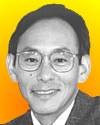 (Born
February 28, 1948) (Born
February 28, 1948)
American physicist who (with Claude Cohen-Tannoudji and William D. Phillips)
was awarded the 1997 Nobel Prize for Physics for their independent, pioneering
research in cooling and trapping atoms using laser light. In their normal
state the constant random thermal motion of atoms limits the precision
of measurements of atomic states. Thus, physicists have sought to cool
and slow atoms down as much as possible. Chu used six laser beams and
worked with a hot gas of sodium atoms. He managed to cool and trap atoms
in what he called "optical molasses." By 1985, he had cooled
sodium atoms to a temperature of about 240 millionth of a degree above
absolute zero. The atoms could be trapped in the laser beams for a period
of about half a second.
February
27:
Neutron
In
1932, the neutron was discovered by Dr. James Chadwick.
February
26:
Radioactivity
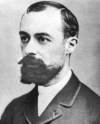 In
1896, Henri Becquerel stored a phosphorescent uranium compound in a closed
desk drawer on top of a photographic plate awaiting a sunnier day to test
his idea that sunlight would make the phosphorescent uranium emit rays.
It remained there several days. Thus by accident, he created a new experiment,
for when he developed the photographic plate, he found a fogged image
in the shape of the rocks. The material was spontaneously generating and
emitting the energetic rays totally without the external sunlight source.
This was a landmark event. The new form of penetrating radiation was the
discovery of the effect of radioactivity. In
1896, Henri Becquerel stored a phosphorescent uranium compound in a closed
desk drawer on top of a photographic plate awaiting a sunnier day to test
his idea that sunlight would make the phosphorescent uranium emit rays.
It remained there several days. Thus by accident, he created a new experiment,
for when he developed the photographic plate, he found a fogged image
in the shape of the rocks. The material was spontaneously generating and
emitting the energetic rays totally without the external sunlight source.
This was a landmark event. The new form of penetrating radiation was the
discovery of the effect of radioactivity.
February
25:
Glenn T. Seaborg
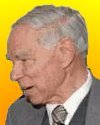 (Born
April 19, 1912: Died February 25, 1999) (Born
April 19, 1912: Died February 25, 1999)
American nuclear chemist. During 1940-58, Seaborg and his colleagues at
the University of California, Berkeley, produced nine of the transuranic
elements (plutonium to nobelium) by bombarding uranium and other elements
with nuclei in a cyclotron. He coined the term actinide for the elements
in this series. The work on elements was directly relevant to the WW II
effort to develop an atomic bomb. It is said that he was influential in
determining the choice of plutonium rather than uranium in the first atomic-bomb
experiments. Seaborg and his early collaborator Edwin McMillan shared
the 1951 Nobel Prize for chemistry. Seaborg was chairman of the US Atomic
Energy Commission 1962-71. Element 106, seaborgium (1974), was named in
his honour.
February
24:
Uranium
In 1896, Henri Bequerel
told the French Academy of Sciences of his investigation of the phosphorescent
rays of some "double sulfate of uranium and potassium" crystals.
He reported that he placed the crystals on the outside of a photographic
plate wrapped in sheets of very thick black paper and exposed the whole
to the sun for several hours. When he developed the photographic plate,
he saw a black silhouette of the substance exposed on the negative. When
he placed a coin or metal screen between the uranium crystals and the
wrapped plate, he saw images of those objects on the negative. He does
not know yet that he has accidentally discovered radioactivity, or that
the sun is not necessary to initiate the rays.
February
23:
Allan MacLeod Cormack
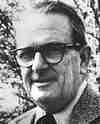 (Born
February 23, 1924: Died May 7, 1998) (Born
February 23, 1924: Died May 7, 1998)
South African-born American physicist who formulated the mathematical
algorithms that made possible the development of a powerful new diagnostic
technique, the cross-sectional X-ray imaging process known as computerized
axial tomography (CAT) scanning. He first described this in two papers
in 1963 and 1964. X-ray tomography is a process by which a picture of
an imaginary slice through an object (or the human body) is built up from
information from detectors rotating around the body. For this work, he
was awarded a share of the 1979 Nobel Prize. Cormack was unusual in the
field of Nobel laureates because he never earned a doctorate degree in
medicine or any other field of science.
February
22:
Fritz Strassmann
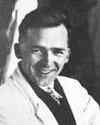 (Born
February 22, 1902: Died April 22, 1980) (Born
February 22, 1902: Died April 22, 1980)
German physical chemist who, with Otto Hahn and Lise Mietner, discovered
neutron-induced nuclear fission in uranium (1938) and thereby opened the
field of atomic energy used both in the atomic bomb for war and in nuclear
reactors to produce electricity. Strassmann's analytical chemistry techniques
showed up the lighter elements produced from neutron bombardment, which
were the result of the splitting of the uranium atom into two lighter
atoms. Earlier in his career, Strassmann codeveloped the rubidium-strontium
technique of radio-dating geological samples.
February
21:
George Ellery Hale
( Born June 29, 1868;
Died February 21, 1938)
American astronomer known for his development of important astronomical
instruments, including the Hale telescope (completed 1948), a 200-inch
reflecting telescope at the California Institute of Technology's Palomar
Mountain Observatory near Pasadena. He is known also for his researches
in solar physics, particularly his discovery of magnetic fields in sunspots.
February
20:
Artificial Radioactivity
In 1934, spurred by
a report by Frédéric Joliot concerning the probability that
many elements could become radioactive upon hydrogen ion bombardment,
Ernest O. Lawrence and his team began bombarding nitrogen in their cyclotron.
Sure enough, they produced a new radioactive substance, and realized how
during years of prior research with the cyclotron Lawrence had invented,
they had never checked for any radioactivity resulting from the products
of hydrogen bombardment. Thus Joliot was the first to discover artificial
radioactivity, and Lawrence's group confirmed it.
February
19: 1984
- USSR performs nuclear test at Eastern Kazakh/Semipalitinsk USSR
February
18:
Isotope
In 1913, chemist Frederick
Soddy introduced the term "isotope". Soddy was an English chemist
and physicist who received the Nobel Prize for Chemistry in 1921 for investigating
radioactive substances. He suggested that different elements produced
in different radioactive transformations were capable of occupying the
same place on the Periodic Table, and on February 18, 1913 he named such
species "isotopes" from Greek words meaning "same place."
He is credited, along with others, with the discovery of the element protactinium
in 1917.
February
17:
British Atom Bomb Announced
In
1952, Winston Churchill announced that Britain had developed its own atomic
bomb. The test for the first British-made atomic bomb was planned at the
Monte Bello Islands off the northwest coast of Australia. The formal postwar
decision to manufacture a British atomic bomb had been made by Prime Minister
Clement Attlee's government early in Jan 1947 during a meeting of the
Defence Subcommittee of the Cabinet. On February 25, 1952, at Sellafield
on the Irish Sea coast in Cumberland, the Windscale plutonium plant began
operation. On 3 Oct 1952, the first British atomic weapons test, called
Hurricane, was successfully conducted aboard the frigate HMS Plym. Britain
was was the third nuclear power after the U.S. and Russia to include the
atomic bomb in its armoury.
February
16: 1977
- USSR performs nuclear test at Sary Shagan USSR
1966 - France performs underground nuclear test at Ecker Algeria
1961 - China uses it's 1st nuclear reactor
February
15: Herman
Kahn
(Born
February 15, 1922; Died July 7, 1983)
American physicist, military analyst (1948-61) and futurist best known
for his controversial studies of nuclear warfare. Kahn won recognition
for his dispassionate analysis of nuclear war in his books On Thermonuclear
War (1960) which still, in its detached analysis of various nuclear-war
scenarios, retains the power to shock.and Thinking About the Unthinkable
(1962) which predicted the probability and survivability of nuclear war.
Later books included the optimistic The Year 2000 (1967) and Why ABM?
(1969). In 1961 he founded the influential Hudson Institute in New York
to make reasoned predictions on world affairs, from narcotics policy to
global economics, energy, international trade, population, transportation,
crime, medicine.
February
14: C.T.R.
Wilson
(Born
February 14, 1869; Died November 15, 1959)
 Scottish
physicist who, with Arthur H. Compton, received the Nobel Prize for Physics
in 1927 for his invention of the Wilson cloud chamber, which became widely
used in the study of radioactivity, X rays, cosmic rays, and other nuclear
phenomena. His discovery was a method of rendering visible the tracks
of such electrically charged particles. It is based upon the formation
of clouds, which develop when sufficiently moist air is suddenly expanded,
thus dropping the temperature below the dew-point. Thereafter, vapour
condenses into small drops, formed round dust particles, or even, an electrically
charged atomic particle. The formation of droplets is so dense that photographs
show continuous tracks of particles travelling through the chamber as
white lines. Scottish
physicist who, with Arthur H. Compton, received the Nobel Prize for Physics
in 1927 for his invention of the Wilson cloud chamber, which became widely
used in the study of radioactivity, X rays, cosmic rays, and other nuclear
phenomena. His discovery was a method of rendering visible the tracks
of such electrically charged particles. It is based upon the formation
of clouds, which develop when sufficiently moist air is suddenly expanded,
thus dropping the temperature below the dew-point. Thereafter, vapour
condenses into small drops, formed round dust particles, or even, an electrically
charged atomic particle. The formation of droplets is so dense that photographs
show continuous tracks of particles travelling through the chamber as
white lines.
February
13: French
Atomic Bomb
In
1960, France detonated their first plutonium bomb from a 330-foot tower
at the Reggane base in the Sahara in what was then French Algeria. On
October 18, 1945, the Atomic Energy Commission (Commissariat à
l'Énergie Atomique; CEA) had been established by General Charles
de Gaulle with the objective of exploiting the scientific, industrial,
and military potential of atomic energy. On July 22, 1958, de Gaulle,
having resumed power as prime minister, had set the date for the first
atomic explosion to occur within the first three months of 1960. His goal
was to assert France's independence and its role on the world stage. Thus
he set about building the country's nuclear capacity acquiring also nuclear-armed
aircraft, missiles and submarines.
February
12: Pierre-Louis
Dulong
(Born February 12,
1785; Died July 18, 1838)
Chemist and physicist who helped formulate the Dulong-Petit law of specific
heats (1819), which proved useful in determining atomic weights.
February
11: Leo
Szilard
(Born February 11,
1898; Died May 30, 1964)
 Hungarian-born
American physicist who, with Enrico Fermi, designed the first nuclear
reactor that sustained nuclear chain reaction (2 Dec 1942). In 1933, Szilard
had left Nazi Germany for England. The same year he conceived the neutron
chain reaction. Moving to N.Y. City in 1938, he conducted fission experiments
at Columbia University. Aware of the danger of nuclear fission in the
hands of the German government, he persuaded Albert Einstein to write
to President Roosevelt, urging him to commission American development
of atomic weapons. In 1943, Major General Leslie Groves, leader of the
Manhattan Project designing the atomic bomb, forced Szilard to sell his
atomic energy patent rights to the U.S. government. Hungarian-born
American physicist who, with Enrico Fermi, designed the first nuclear
reactor that sustained nuclear chain reaction (2 Dec 1942). In 1933, Szilard
had left Nazi Germany for England. The same year he conceived the neutron
chain reaction. Moving to N.Y. City in 1938, he conducted fission experiments
at Columbia University. Aware of the danger of nuclear fission in the
hands of the German government, he persuaded Albert Einstein to write
to President Roosevelt, urging him to commission American development
of atomic weapons. In 1943, Major General Leslie Groves, leader of the
Manhattan Project designing the atomic bomb, forced Szilard to sell his
atomic energy patent rights to the U.S. government.
February
11: Atomic
Fission
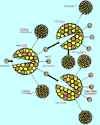 In
1939, the journal Nature published a theoretical paper on nuclear fission.
The term was coined by the authors Lise Meitner and Otto Fritsch, her
nephew. They knew that when a uranium nucleus was struck by neutrons,
barium was produced. Seeking an explanation, they used Bohr's "liquid
drop" model of the nucleus to envision the neutron inducing oscillations
in a uranium nucleus, which would occasionally stretch out into the shape
of a dumbbell. Sometimes, the repulsive forces between the protons in
the two bulbous ends would cause the narrow waist joining them to pinch
off and leave two nuclei where before there had been one. They calculated
calculated the huge amounts of energy released. This was the basis for
nuclear chain reaction. In
1939, the journal Nature published a theoretical paper on nuclear fission.
The term was coined by the authors Lise Meitner and Otto Fritsch, her
nephew. They knew that when a uranium nucleus was struck by neutrons,
barium was produced. Seeking an explanation, they used Bohr's "liquid
drop" model of the nucleus to envision the neutron inducing oscillations
in a uranium nucleus, which would occasionally stretch out into the shape
of a dumbbell. Sometimes, the repulsive forces between the protons in
the two bulbous ends would cause the narrow waist joining them to pinch
off and leave two nuclei where before there had been one. They calculated
calculated the huge amounts of energy released. This was the basis for
nuclear chain reaction.
February
10: Wilhelm
Conrad Röntgen (discovery of X-rays)
(Born
May 27, 1845; Died February 10, 1923)
(also spelled Roentgen) German physicist who was a recipient of the first
Nobel Prize for Physics, in 1901, for his discovery of X rays, which heralded
the age of modern physics and revolutionized diagnostic medicine.
February
9: Japanese nuclear accident
In 1991, Japan's worst
nuclear accident happened at Mihama. A pipe in the steam generator  burst,
leaking 55 tonnes of radioactive primary (reactor) coolant water into
the secondary steam-generating circuit. Some radioactivity was released
to the atmosphere and the plant's emergency core cooling system was activated.
MITI reported later that the accident was caused by human error, some
anti-vibration bars being wrongly installed by workers and sawn off short
to make them fit. The release of radiation into the atmosphere was kept
to a small amount. No deaths resulted. Various measures were taken to
prevent the recurrence of the accident, including the replacement of the
steam generators. burst,
leaking 55 tonnes of radioactive primary (reactor) coolant water into
the secondary steam-generating circuit. Some radioactivity was released
to the atmosphere and the plant's emergency core cooling system was activated.
MITI reported later that the accident was caused by human error, some
anti-vibration bars being wrongly installed by workers and sawn off short
to make them fit. The release of radiation into the atmosphere was kept
to a small amount. No deaths resulted. Various measures were taken to
prevent the recurrence of the accident, including the replacement of the
steam generators.
February
8: Walther Bothe
(Born January 8, 1891; Died February 8, 1957)
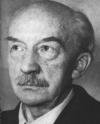 Walther
Wilhelm Georg Bothe was a German physicist who developed the coincidence
method of detecting the emission of electrons by x-rays in which electrons
passing through two adjacent Geiger tubes at almost the same time are
registered as a coincidental event. He used it to show that momentum and
energy are conserved at the atomic level. In 1929 he applied the method
to the study of cosmic rays and was able to show that they consisted of
massive particles rather than photons. This research brought him a share
(with Max Born) in the Nobel Prize for 1954. In 1930, he observed a strange
radiation emitted from beryllium when it was exposed to alpha particles,
later identified by Chadwick as consisting of neutrons. He built Germany's
first cyclotron (1943). Walther
Wilhelm Georg Bothe was a German physicist who developed the coincidence
method of detecting the emission of electrons by x-rays in which electrons
passing through two adjacent Geiger tubes at almost the same time are
registered as a coincidental event. He used it to show that momentum and
energy are conserved at the atomic level. In 1929 he applied the method
to the study of cosmic rays and was able to show that they consisted of
massive particles rather than photons. This research brought him a share
(with Max Born) in the Nobel Prize for 1954. In 1930, he observed a strange
radiation emitted from beryllium when it was exposed to alpha particles,
later identified by Chadwick as consisting of neutrons. He built Germany's
first cyclotron (1943).
February
7: Neutron
In 1932, the "neutron"
was described in an article in the journal Nature by its discoverer, James
Chadwick, who coined the name for this neutral particle present in the
nucleus of atoms.
February
6: Spanish chemist Fausto Elhuyer
dies
(Born
October 11, 1755; Died February 6, 1833)
Fausto (d') Elhuyar (y de Suvisa) was a Spanish chemist and mineralogist
who in partnership with his brother Juan José was the first to
isolate tungsten metal, or wolfram (1783), though not  the
first to recognize its elemental nature. It was in 1781 that the Swedish
chemist, Carl Scheele discovered tungstic acid from a mineral now known
as scheelite, but which had been known since about 1758 as tung sten (Swedish,
heavy stone). The Elhuyar brothers found the tungstic acid in the ore
wolframite, and extracted the metal by reducing this acid with charcoal.
They achieved it at the Seminary of Bergara and, for the first time, the
names of Basque persons would be written in annals of the history of science. the
first to recognize its elemental nature. It was in 1781 that the Swedish
chemist, Carl Scheele discovered tungstic acid from a mineral now known
as scheelite, but which had been known since about 1758 as tung sten (Swedish,
heavy stone). The Elhuyar brothers found the tungstic acid in the ore
wolframite, and extracted the metal by reducing this acid with charcoal.
They achieved it at the Seminary of Bergara and, for the first time, the
names of Basque persons would be written in annals of the history of science.
February
5: Nobel Prize recipient Robert
Hofstadter was born
(Born
February 5, 1915; dies November 17, 1990)
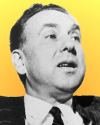 American
scientist who was a joint recipient of the Nobel Prize for Physics in
1961 for his investigations in which he measured the size of the neutron
and proton in the nuclei of atoms. He revealed the hitherto unknown structure
of these particles and helped create an identifying order for subatomic
particles. He also correctly predicted the existence of hte omega-meson
and rho-meson. He also studied controlled nuclear fission. Hofstadter
was one of the driving forces behind the creation of the Stanford Linear
Accelerator. He also made substantial contributions to gamma ray spectroscopy,
leading to the use of radioactive tracers to locate tumors and other disorders.
(He shared the prize with Rudolf Ludwig Mössbauer of Germany.) American
scientist who was a joint recipient of the Nobel Prize for Physics in
1961 for his investigations in which he measured the size of the neutron
and proton in the nuclei of atoms. He revealed the hitherto unknown structure
of these particles and helped create an identifying order for subatomic
particles. He also correctly predicted the existence of hte omega-meson
and rho-meson. He also studied controlled nuclear fission. Hofstadter
was one of the driving forces behind the creation of the Stanford Linear
Accelerator. He also made substantial contributions to gamma ray spectroscopy,
leading to the use of radioactive tracers to locate tumors and other disorders.
(He shared the prize with Rudolf Ludwig Mössbauer of Germany.)
February
4: In
1936, the first radioactive substance to be produced in the U.S. synthetically
was radium E, by bombarding the element bismuth with neutrons. This was
achieved by Dr. John Jacob Livingood at the University of California at
Berkeley.
February
3: William D. Coolidge- American engineer
and physical chemist
(Born
October 23, 1873; Died February 3, 1975)
 William
David Coolidge was an American engineer and physical chemist whose improvement
of tungsten filaments (1913, patent No.1,082,933) was essential in the
development of the modern incandescent lamp bulb and the X-ray tube. Coolidge's
X-ray tube (1916, U.S. patent No. 1,203,495) completely revolutionized
the generation of X-rays and remains to this day the model upon which
all X-ray tubes for medical applications are patterned. He worked on many
other devices such as high-quality magnetic steel, improved ventilating
fans, and the electric blanket. During World War II he contributed research
to projects involving radar and radar countermeasures. He was awarded
83 patents during his lifetime. William
David Coolidge was an American engineer and physical chemist whose improvement
of tungsten filaments (1913, patent No.1,082,933) was essential in the
development of the modern incandescent lamp bulb and the X-ray tube. Coolidge's
X-ray tube (1916, U.S. patent No. 1,203,495) completely revolutionized
the generation of X-rays and remains to this day the model upon which
all X-ray tubes for medical applications are patterned. He worked on many
other devices such as high-quality magnetic steel, improved ventilating
fans, and the electric blanket. During World War II he contributed research
to projects involving radar and radar countermeasures. He was awarded
83 patents during his lifetime.
February
2: In
1951- The US performs nuclear test at Nevada Test Site.
February
2: In
1954 - President Eisenhower reports detonation of 1st H-bomb (done in
1952).
February
1:
In 1951, the
first X-ray moving picture process was demonstrated.
February
1: In
1951, the TV station KTLA broadcast of an atomic explosion was the first
to be seen publicly on television. The event was captured by an NBC camera
on Mount Wilson, 300 miles away from the test blast at Frenchman Flats,
Nevada.
Click
here for previous months
January
|

